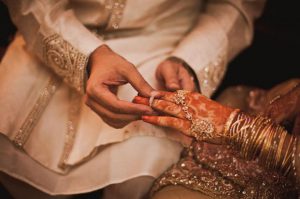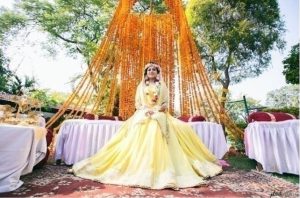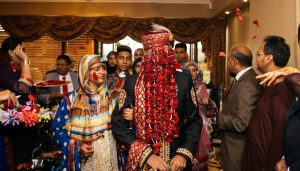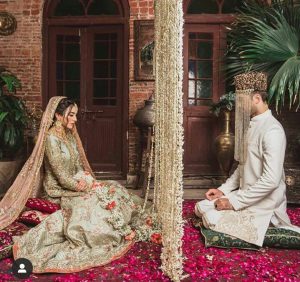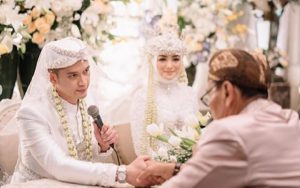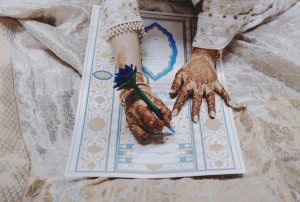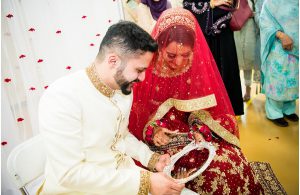A wedding is not just a union of two people but two families. And when it comes to Muslim weddings, family plays an important role in performing all the rituals. Be it any culture or religion, the announcement of a wedding brings a wide smile to the faces of the family members. Muslim weddings are no less. Culturally known as Nikah, a Muslim marriage has a lot of traditions and customs entailing to it. In this blog, let’s tour a Nikah with all the rituals and know more about The Big Day.
Salatul Istikhara
Salatul Istikhara is the first step after confirming the wedding proposal. The Imam (head of the community) prays to Allah to seek blessings for the couple. It is the official announcement of marriage.
Imam Zamin
Groom’s mother welcomes the bride to their family by tieing a silver or gold coin wrapped in silk to her wrist. They also take along sweet gifts for the celebration.
Mangni
It is the engagement ceremony for the couple. The bride and groom exchange rings, and both the families celebrate by holding a party.
Manjha
Manjha is also known as the Haldi ceremony. It is said to be a tradition of bonding over the same colour, the colour of turmeric. Everyone puts turmeric paste on the face of the bride and groom. After the Manjha ceremony, both of them are locked inside their homes and cannot get out before the Nikah.
Mehandi
After Manjha, the bride and all the women in the family get henna designs on their hands. It is a female-oriented ceremony.
Sanchak
During Sanchak, male members of the groom’s family visit the bride’s home to present bridal outfits, jewellery, gifts, and sweets.
Baraat
It is the most fun ceremony with a procession. The groom is seated on a decorated horse, chariot or car. People in the Baraat dance and reach the wedding venue, having fun along the way. The bride’s brother welcomes the Baraat at the venue by sprinkling rose water on the groom and his family.
Nikah
During Nikah, men and women are separately seated. Groom and bride are separated by a veil, and the Maulvi recites the Quran during Nikah. The father of the bride is known as Wali, and the groom’s family asks for the consent of the bride for the marriage during the Nikah. Asking for the bride’s consent is called Mehr.
Ijab-e-Qubool
Giving consent in the form of ‘Qubool Hai’ is one of the most important parts of a Muslim wedding. The groom and bride say it thrice to make it official.
Nikah Nama
Nikah Nama is written consent and agreement of marriage wherein the duties of both bride and groom are stated. The Maulvi recites the marriage vows and Khutba in front of the gathering. Post the recital, people perform Durund, a ceremony to give blessings to the new couple and congratulate one another.
Arsi Mushraj
It is the last wedding ritual where the groom and bride look at each other through a mirror placed between them. It sums up the traditional rituals of a Muslim wedding. The veil is finally removed.
So, the next time you attend a Nikah, we’re sure you’ll be able to relate to all these customs and indulge in the celebration.



